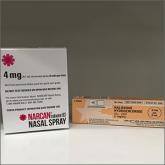Article

PSA cancer screening: A case for shared decision-making
- Author:
- Jaividhya Dasarathy, MD, FAAFP
- Rajesh Rajesh, MD
Whether to screen for prostate cancer using PSA testing is a difficult decision for many men. Here’s the information you need to help them make an...
Article

Would you be able to recognize the signs and symptoms of this particular drug overdose?
- Author:
- Rajesh Rajesh, MD
- Jaividhya Dasarathy, MD
These 2 cases offer insights to faster recognition of a common cause of drug overdose.
Article

The case for behavioral health integration into primary care
- Author:
- Rajesh Rajesh, MD
- Rajesh Tampi, MD
- Silpa Balachandran, MD
Chronic health disorders can be better managed without increasing costs by engaging in collaborative care management of depression and anxiety.
Article

Schizophrenia: Ensuring an accurate Dx, optimizing treatment
- Author:
- Rajesh Rajesh, MD
- Rajesh Tampi, MD, DFAPA
First rule out secondary psychosis with appropriate lab tests and imaging studies, as needed. Give an antipsychotic for at least 4 weeks to judge...
